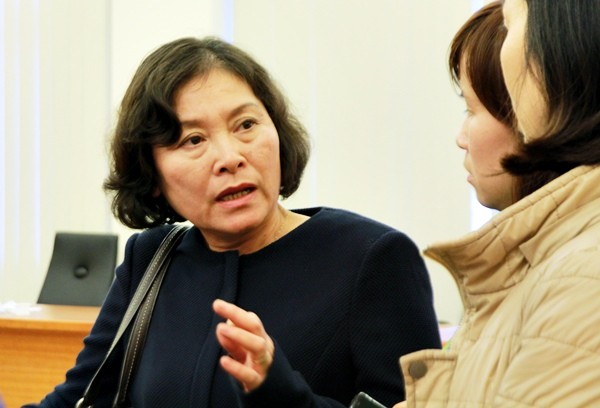(VOVworld) – The Kovalevskaia Science Award 2014 was granted to an individual and a group of 16 female scientists led by Associate Professor Nguyen Thi Binh for their excellent achievements in applied science. The group, from the Hanoi Medical University and the Central Eye Hospital, was honored for their research into a new treatment method that uses stem cell technology to cure ocular surface damage.
 |
Associate Professor Nguyen Thi Binh represents the research team granted with
Kovalevskaia Award 2014. (Photo: L.V) |
Nguyen Thi Binh's group started their research in 2004 with the aim of developing a new treatment method by raising epithelium from various sources of stem cells to cure ocular surface injuries.
The method is unprecedented in Vietnam and is still under further research worldwide.
Associate professor Nguyen Thi Binh representing the team said: “our study is considered the most advanced means to bring light to those with ocular surface damage. It is the latest form of treatment in Vietnam and seen as the last resort for patients who have undergone various operations and used different methods without success. The patients will receive the new treatment but at a low cost compared to having it done abroad.”
In the initial period, their research faced many difficulties due to the lack of capital. By 2007, the project team had received investment from the Health Ministry and then from the Ministry of Science and Technology.
Ms. Binh explains further “We still had difficulties in getting chemicals and materials needed for our research because we couldn’t buy them in Vietnam. If we ordered from overseas, the procedure would be complicated and the project’s finances couldn’t afford it. But we’ve overcome the difficulties to successfully raise the stem cell epithelium.”
After 4 years, the team successfully raised epithelium from rabbit cornea-edge cells which were then transplanted into the broken eye of the rabbit with positive results. The research was then successfully applied to humans. The first patient with ocular surface damage was cured by this method n 2008.
Cornea expert, Doctor Vu Tue Khanh who directly participated in the surgery on the patient, said: “If people only have damage in the layer of the ocular surface epithelium or in the layer of cornea epithelium, most of them can recover rapidly, within 3 months after surgery, by using the transplantation method. If the outcome is stable in half a year, there will be almost no change afterwards.”
To date, the treatment method has cured 15 patients with a success rate of up to 80%. Following the transplant, their eyesight has improved remarkably.
Ho Thi Kim Thanh, in charge of the trade union and science research of Hanoi Medical University, stated: “It’s an applicable study involving many clinicians and scientists from research centers helping to develop a stream of products which has to suit the patients. Although the research team has conducted successfully treatment on a small group of patients, the initial achievement is vital for future studies and has created a breakthrough in Vietnam, bringing hope to many patients.”